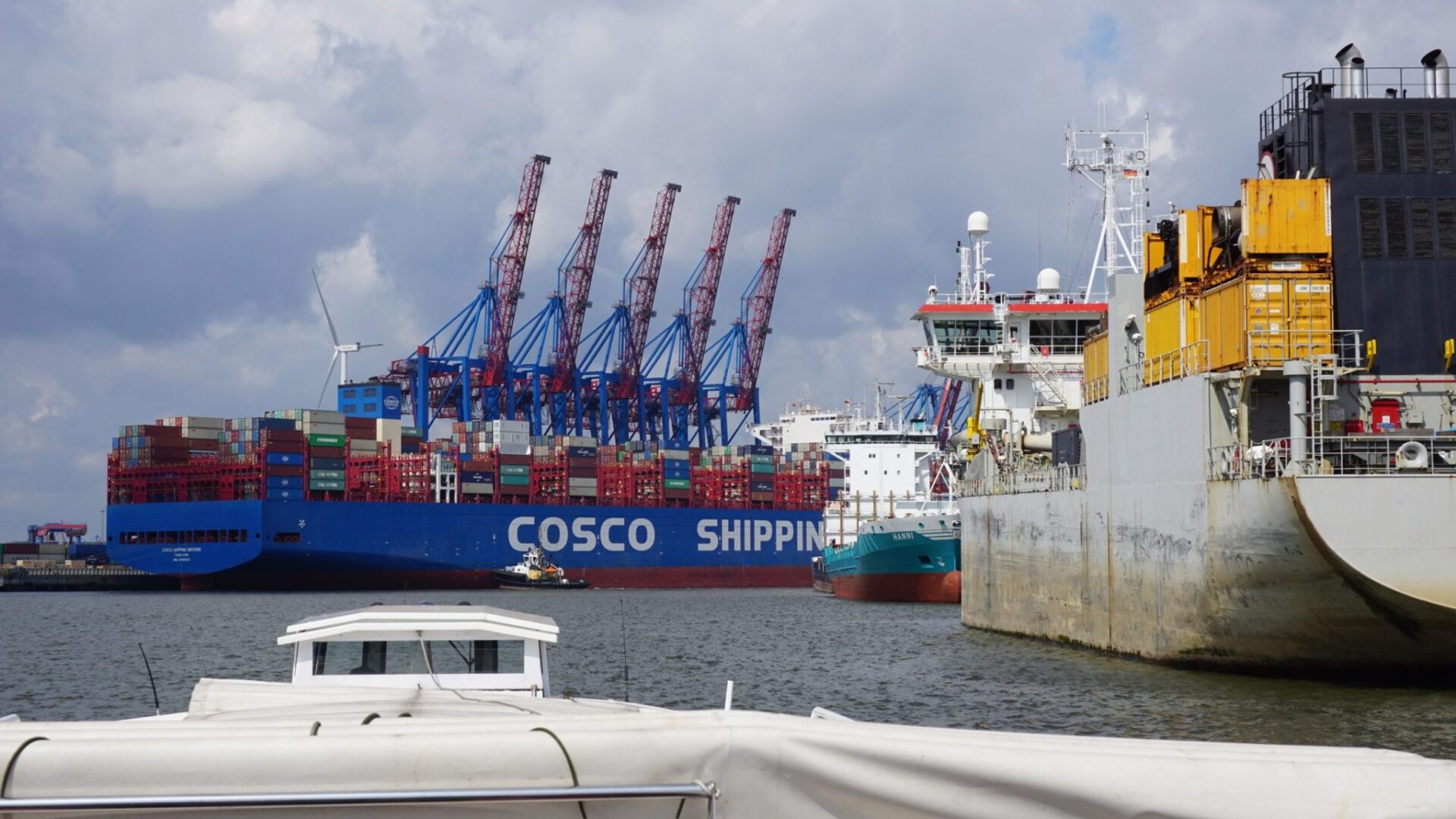
Ich Bin Ein Hamburger: The Peculiar Story of Germany’s Greatest Port
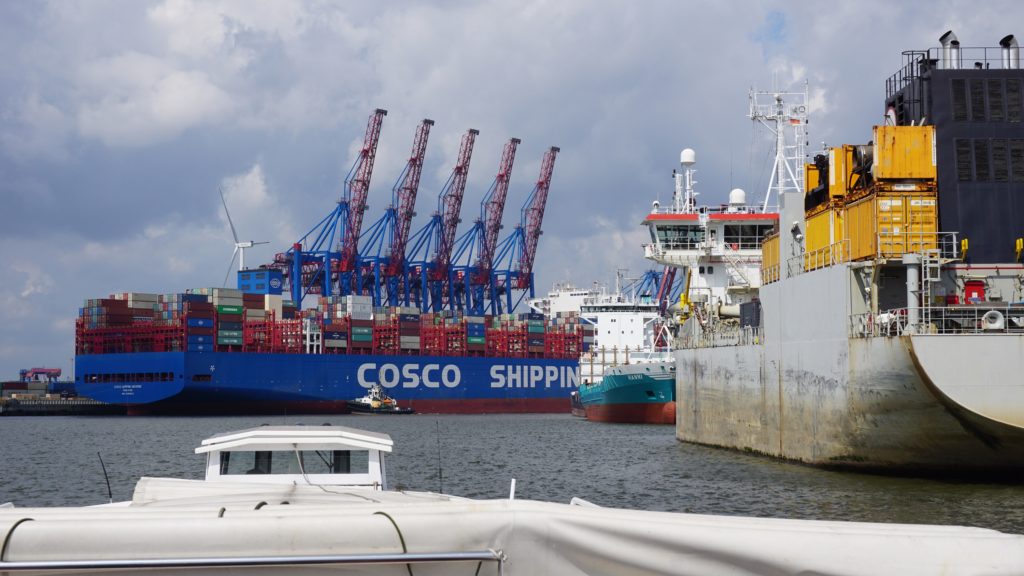

Travel often leads to interesting encounters with strangers some of which turn into lasting friendships. So it was when I arrived in Warsaw on my first FAM trip in September 2015. On my first night out, I struck up a conversation with a quirky but charming Iranian émigré, Nima Moghaddam, sitting at a table next to me on the main historic thoroughfare, Nowy Swiat, or New World Street. Nima was a somewhat lost soul, caught between the country of his birth and the country of his adoption, Germany. He and I bonded instantly, and I soon became his mentor and dâdâsh jân (older brother). We have kept alive the friendship we forged during Warsaw adventures, so when I visited northern Europe, I made it a point to add Nima’s hometown, Hamburg, to my itinerary.
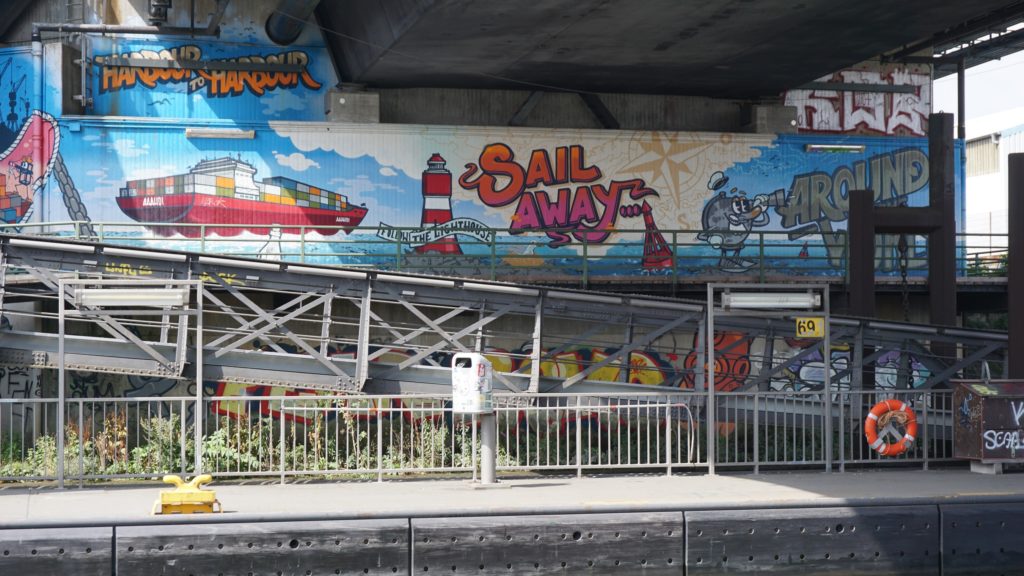

How did an inland city become a port?
Hamburg today is Germany’s largest port, handling 135 million tons of cargo every year besides playing host to almost 900,000 visitors who swarm off the 200 cruise ships that visit annually. But its location as a port is a very peculiar choice, being 130 km upriver from the mouth of the Elbe, which runs through the city. This unusual siting has much to do with the fact that Hamburg was originally a missionary settlement and moated fort, and it was only after it gained free-trade rights and founded the Hanseatic League with Lübeck in 1241 that it began to grow in importance as a port. This development has not been without its challenges, as continual widening and deepening of the Elbe has been necessary to allow container ships, which have grown dramatically in size, to access the port. Opposition has mounted from environmental groups concerned about the impact of these activities on the local marine and birdlife, leading to a 20-year delay in the most recent dredging efforts. Consequently, Hamburg has fallen behind Antwerp and Rotterdam, its chief competitors in northern Europe, as only ships with smaller loads and shallower draughts can currently sail all the way inland.
Discovery Dock
But the city, which is also a significant tourist destination and not just a major European port, is one step ahead of its competitors in the tourist game. In May 2019, it launched a fascinating interactive experience of Hamburg’s port called Discovery Dock. The experience is centred around an impressive 3D model of Hamburg port, which uses projections to represent 24 hours of water traffic movement squeezed into the 50-minute tour. Instructed by my genial silver-haired guide, Arild, I attempted to offload a shipping container using VR headsets in the stipulated three minutes that real crane operators actually take to perform this job and failed each time. It’s a lot harder than it looks at first glance.
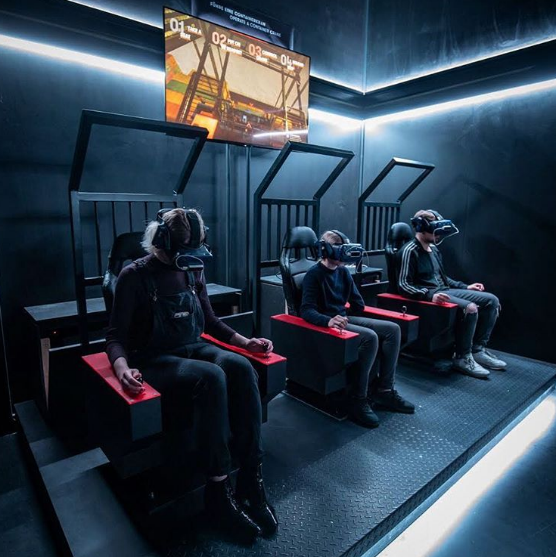

Moving on, we searched for contraband using a torch that lit up glowing virtual containers carrying illegal stuff amid others full of legit cargo like bananas and Nike sneakers. I found the displays to be informative and engaging. I was particularly amused to encounter a virtual Chinese mitten crab, an alien species that had arrived originally as a stowaway in the ballast water of cargo ships returning from Asia. The crab, also known as the Shanghai hairy crab, was one of the first Asian crustacean immigrants to Europe, and is now entirely at home in the waters of the Elbe. Truly ironic is the fact that in dealing with this invasive species of crustaceans, Germans have begun to harvest them and sell them to China, their original home, where they are valued as a restaurant delicacy!
St. Pauli Elbe Tunnel
Another thing that travel, especially unplanned travel, often throws up is the unexpected pleasure. While waiting for the harbour cruise, number one on Hamburg’s must-visit list of travel attractions, I discovered the entrance to the St. Pauli Elbe Tunnel. This underwater tunnel was built in 1911, during the reign of Kaiser Wilhelm II, to transport workers from the northern side of the Elbe to the southern industrial side, home to docks and shipyards. At the time of its completion, it was hailed as a marvel of engineering construction and technological sophistication.
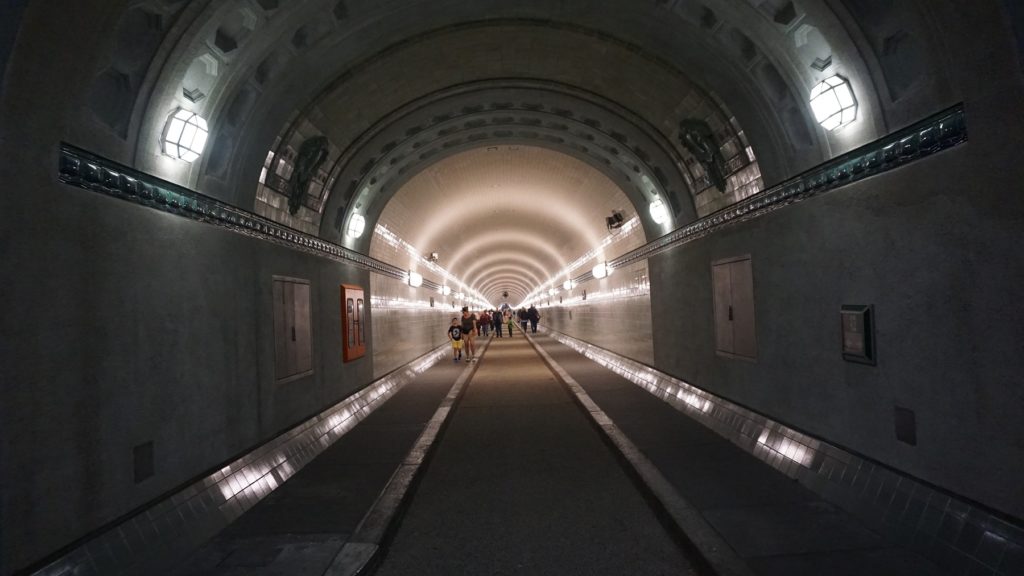

The 426-metre-long tunnel is now closed to traffic, but there are four giant lift cages that take tourists down 24 metres below the surface and then they can walk its length, emerging in Steinwerder, on the southern bank of the Elbe. At the other end, rather than take the lift, I chose to climb the complex zigzag set of stairways that ascends the curved well to the top. Best of all, this unlisted, and hence little-known, tourist attraction is completely free to visitors and there is no pressure to see and do things other than enjoy the walk—a blissful feeling!
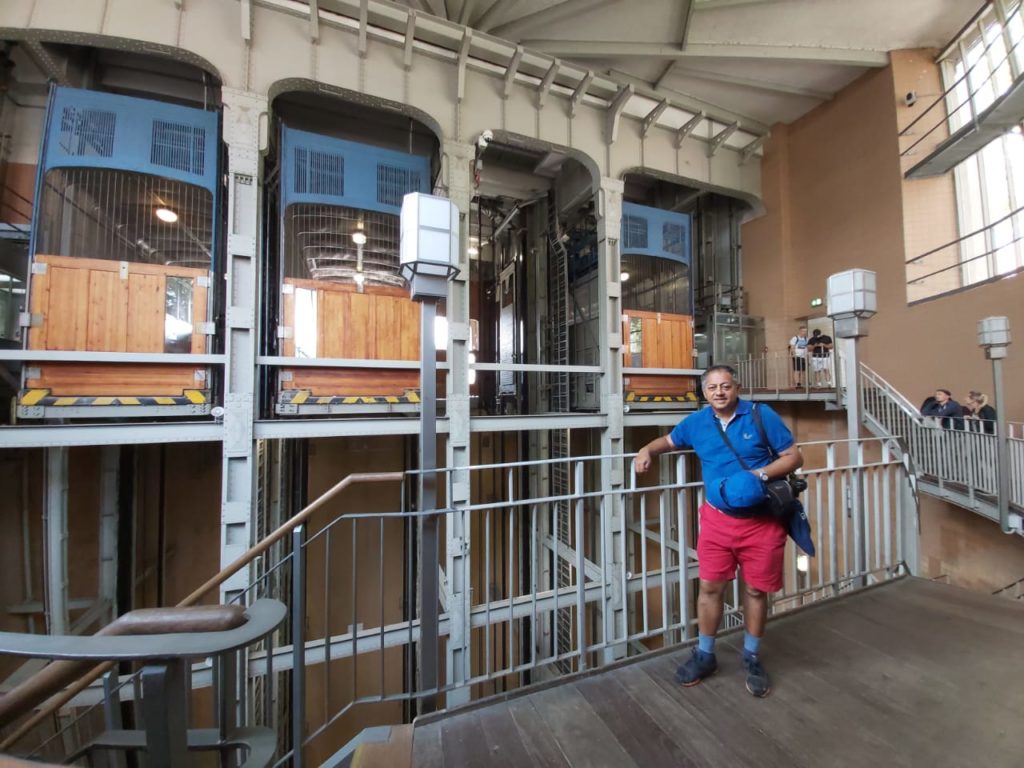



Sunset walk on the Baumwall
Later that evening, a stroll at sunset along the harbour front brought me to an elegant wine bar called Alex where I savoured a glass of semi-sweet Riesling Kabinett made from Germany’s signature grape. Dominating the skyline is the vast bulk of Hamburg’s pride and joy, the new Elbpharmonie opera house. It was built by refurbishing an old brick warehouse and crowning it with a giant ice-blue superstructure meant to give the impression of ocean waves, but to me it looked like a glittering tower of icing on a giant slice of brown cheesecake.
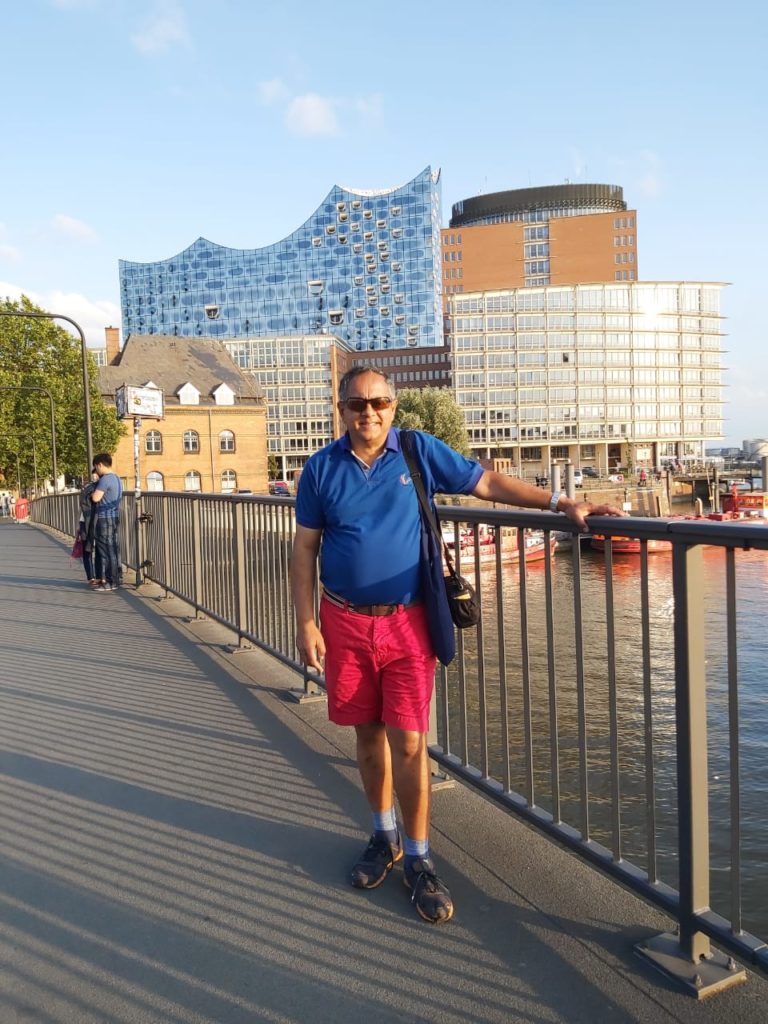

Right in front of me, a lanky troubadour crooned his lonesome ballads, imploring the crowds of strollers to tip generously. And to the right the spindly masts of the schooner Rickmer Rickmers, permanently at anchor in Hamburg port as a floating museum ship, made for a unique silhouette against the rays of the setting sun. The crooner reminded me a great deal of Gordon Lightfoot and I asked him to play “Sundown”, but with an apologetic shake of the head he said he didn’t know the song or the singer.
Birdman at the Elbpharmonie
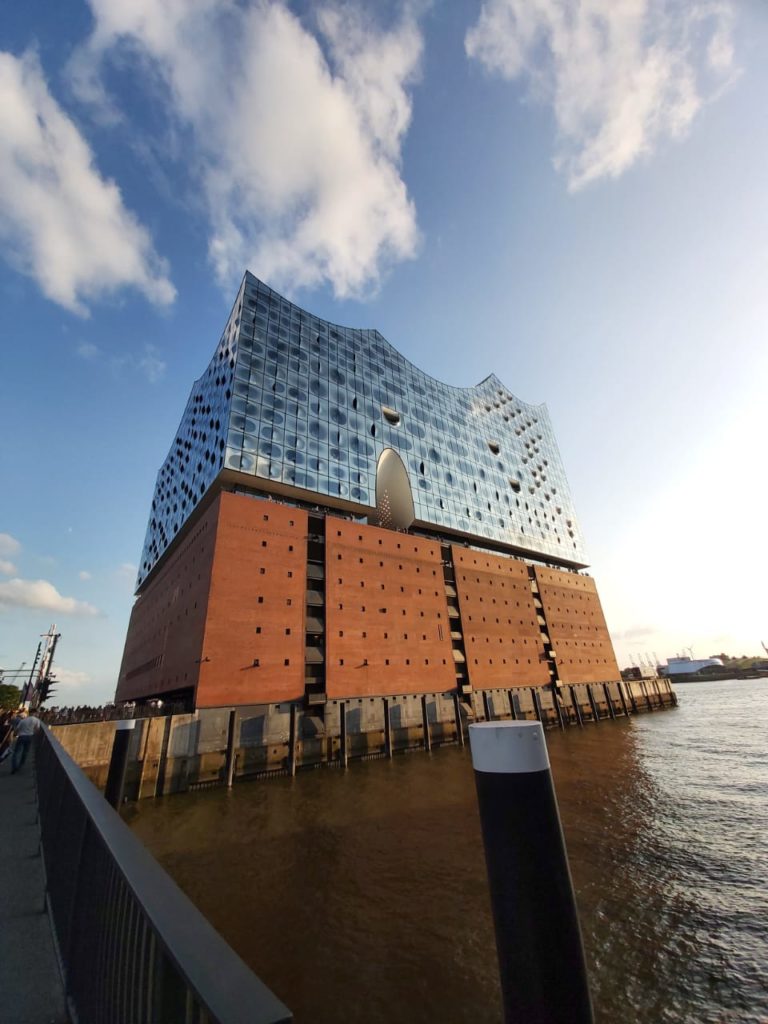

On my last evening, I was lucky enough to snag a ticket, courtesy Hamburg Tourism, to a live performance at the Elbpharmonie, much to the envy of Nima who hadn’t succeeded in this quest in months. An 80-metres long, slightly curved escalator transported us into the belly of the beast and up to the free Plaza level, 37 metres up, where we walked all the way around the building, admiring the panoramic views of Hamburg port and city afforded from this tremendous vantage point.
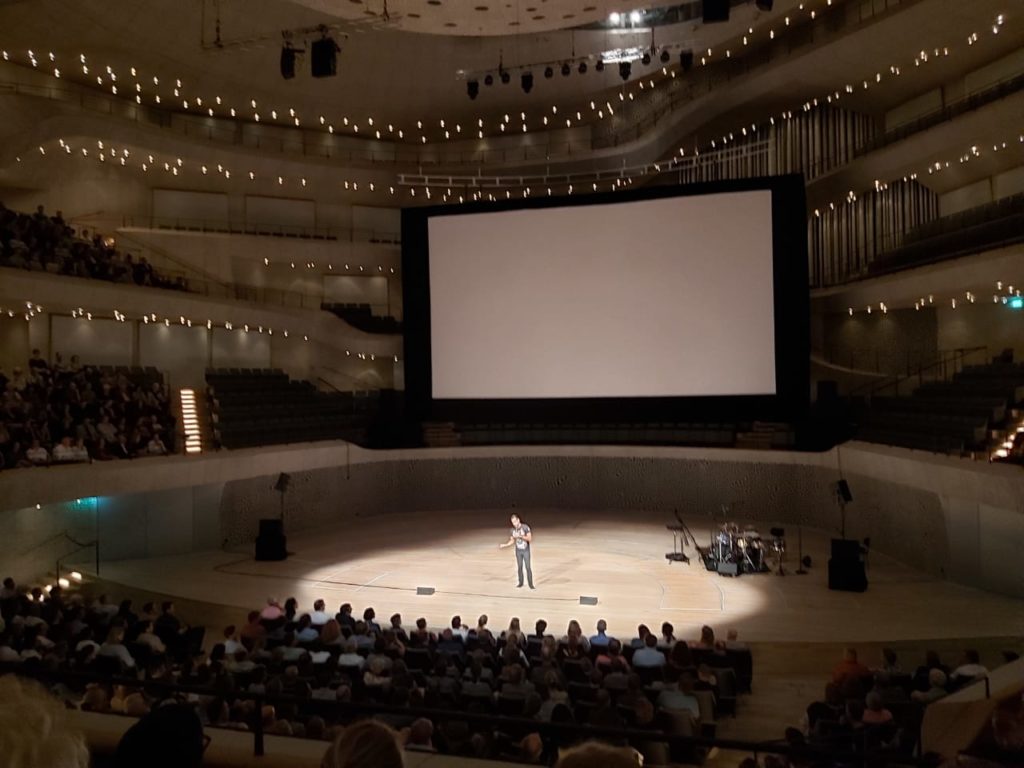

Once inside the Grand Hall, where the 2,100 seats are arranged like those in a stadium around the orchestral pit, we were treated to a virtuoso performance on the drums by Antonio Sánchez, the Mexican jazz musician who did the original music score for the Oscar-winning movie Birdman (2014), directed by his compatriot Alejandro González Iñárritu. While Riggan Thomson, the tormented character played by Michael Keaton, strode the stage at Broadway’s St. James Theatre on the screen overhead, Antonio Sánchez performed under the lights on his drum set centre stage. The incredible acoustics of the cavernous concert hotel amplified the ominously thrilling rattle of the drums in a way that the movie did not capture, and had me listening spellbound.
![]()
![]()

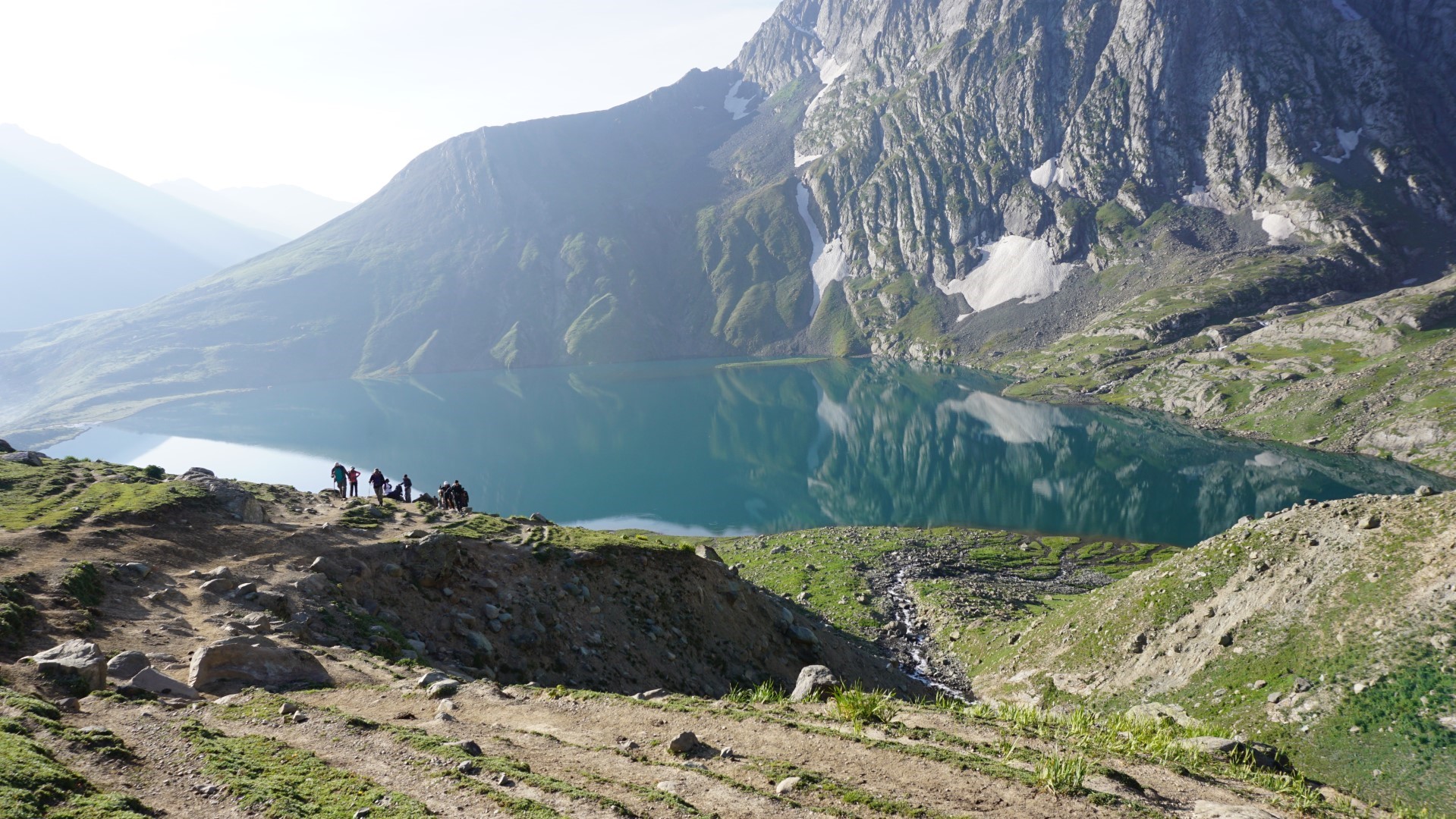


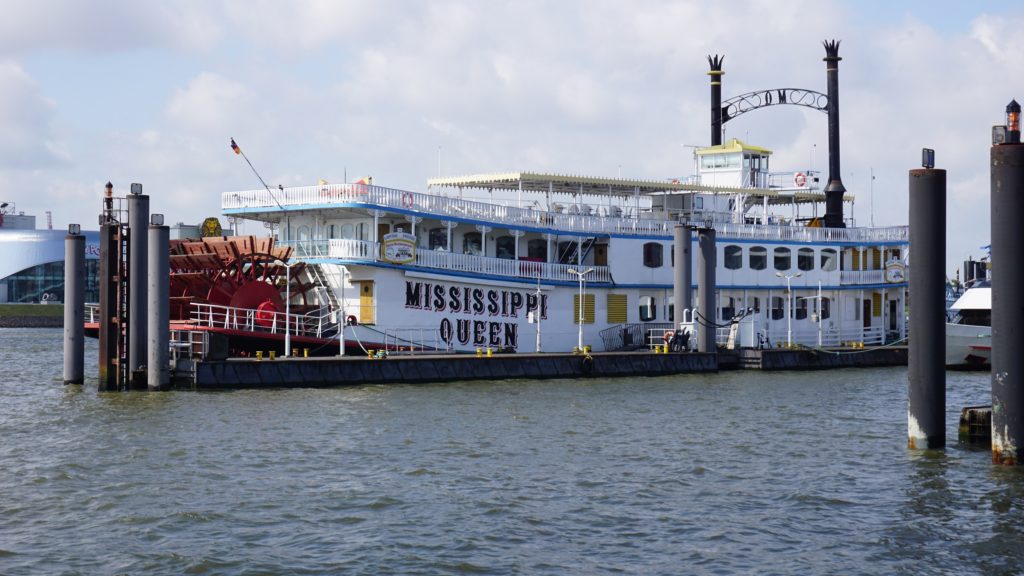
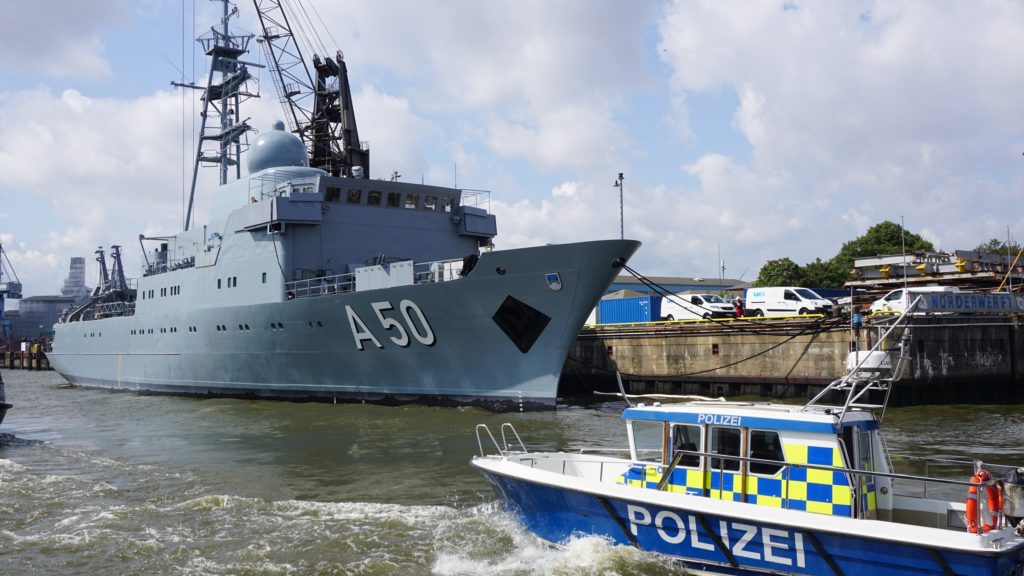
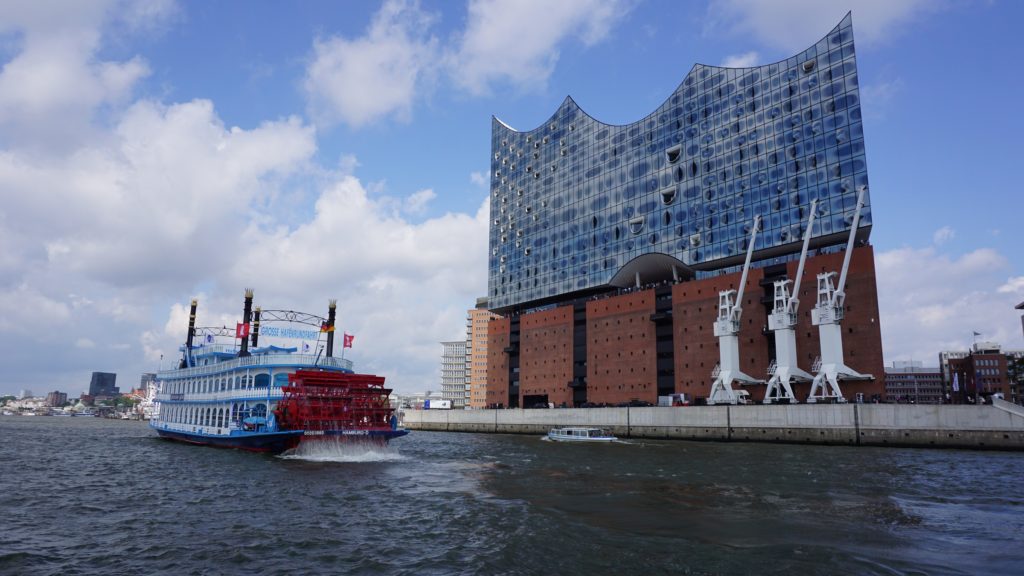
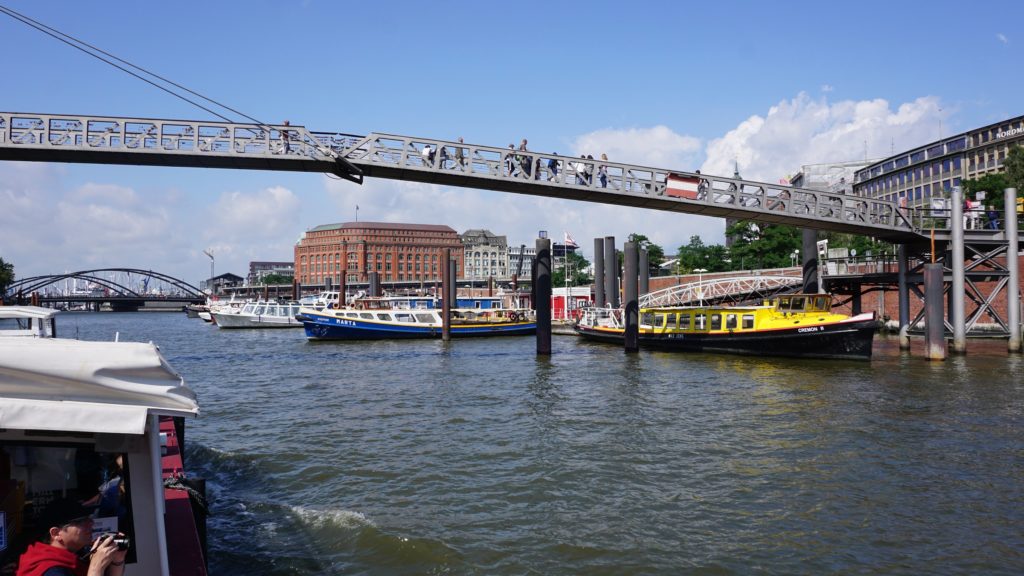

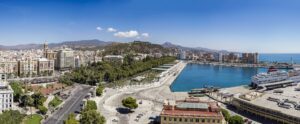

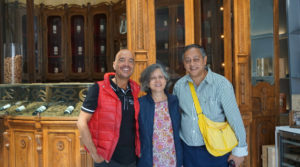
One thought on “Ich Bin Ein Hamburger: The Peculiar Story of Germany’s Greatest Port”